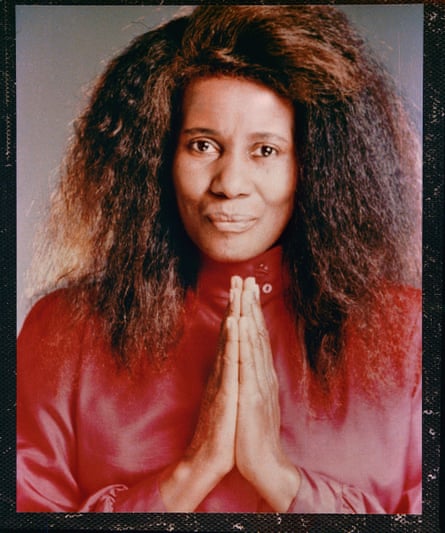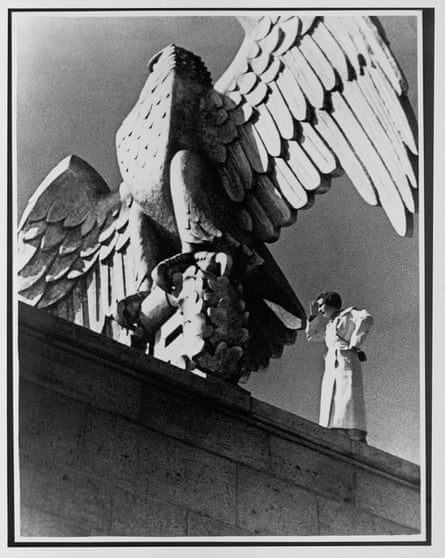T
The wait for Beyoncé’s upcoming album, Act II, has officially begun, as declared by the singer herself on Instagram. Along with unveiling the album art, Beyoncé shared a photo of herself on a white horse, clutching an American flag, dressed in patriotic colors of red, white, and blue.
Beyoncé stated in the caption that this album took more than five years to create. She explained that it was inspired by an experience in the past where she felt unwelcome and it was made evident that she did not belong. In 2016, the release of a country song caused controversy within the mainstream country community for the singer.
The cover art of Act II incorporates elements from the iconic imagery of country music, such as horses, boots, flags, and 10-gallon hats. According to Francesca T Royster, a professor of English at DePaul University and author of Black Country Music: Listening for Revolutions, these references are deliberately included to incite conversation and analysis.
According to Royster, the aesthetic decision is daring and appears to be indicating how Beyoncé is inserting herself into discussions about nationalism. This theme has long been a focal point in conversations about country music, patriotism, and legitimacy, dating back to its beginnings.
Beyoncé stated in the caption that her desire is for race to no longer be a factor in determining the genre of music an artist releases, in the future.
After delving further into the past of country music, she realized how music has the power to bring people together from all over the world and also give a platform to those who have devoted themselves to educating about our musical heritage.
Various artists have impacted the genre since its beginning, as noted by musician Rhiannon Giddens in a recent Guardian article. The development of string instruments by enslaved individuals in the Caribbean laid the foundation for the contemporary banjo, and decades later, Black songwriter Lesley Riddle wrote several popular songs in the 1930s for the renowned Carter Family, pioneers of country music. However, even today, the country music industry is predominantly represented by white, rural performers.
Beyoncé has made history by becoming the first Black woman to top Billboard’s Hot Country Songs chart with her single “Texas Hold ‘Em”. Despite some initial resistance, the song has proven to be successful and has received praise from many, including actor John Schneider who compared Beyoncé’s venture into country music to a dog marking its territory.
The description also included a guarantee of special guest appearances and collaborations. Recently, Dolly Parton shared that Beyoncé had made a new version of her hit song Jolene from 1973, which may potentially be featured in Act II.
While the tunes may possess a hint of country influence, Beyoncé concluded her statement by stating: “This is not a country album. This is a ‘Beyoncé’ album.”
The photograph captured by Blair Caldwell of Beyoncé on a horse reminds us of her previous cover for Renaissance, her dance album that was heavily influenced by house music. In the artwork for that album, Beyoncé was seen sitting on a horse made of mirrored disco balls. Country music journalist Marissa R Moss suggested that this cover could have been inspired by the Bill Pickett Invitational Rodeo, a Black rodeo that has been around for many years. Additionally, Royster speculates that the inspiration for the imagery in Act II goes back even further to iconic presidential portraits like those by Gilbert Stuart and Charles Wilson Peale of George Washington.
Kehinde Wiley, a painter renowned for his portrait of Barack Obama displayed in the Smithsonian National Portrait Gallery, was also commissioned by Michael Jackson in 2010 to depict him riding a white horse, dressed in regal armor and a cape. Royster notes similarities between Act II’s artwork and Jackson’s commission, stating that Beyoncé’s cover is a reference to Black art interventions and reinterpretations.

For those who are not well-versed in country music and the Black legacy of cowboy culture, Beyoncé’s incorporation of these symbols may come across as controversial. However, it’s possible that she intentionally intended for it to be perceived this way. According to Royster, these visuals can be seen as a response to the criticism she received for her 2016 CMA performance of “Daddy Lessons” where she was told she didn’t fit in with the country music genre.
In that particular year, Beyoncé debuted Lemonade, a revolutionary album that delved into the topic of her husband Jay-Z’s unfaithfulness. Among the tracks was “Daddy Lessons,” a country-style song that Beyoncé sang at the Country Music Awards alongside The Chicks. However, there were those in the country music world who shunned Beyoncé, and the Grammy committee for the genre declined to consider the song for awards in the categories of best country song and country solo performance.
Beyoncé referenced this experience in the caption for her post featuring the album art for Act II, stating: “The critiques I encountered upon entering this genre pushed me to surpass the boundaries that were imposed on me. Act II is the result of pushing myself and taking the time to blend and fuse genres in order to create this collection of songs.”
In recent years, numerous Black entertainers and clothing creators have confronted the legacy of Black cowboys. Examples include the fashion brands Pyer Moss and Telfar, who have released collections drawing inspiration from this aesthetic. Lil Nas X’s popular song Old Town Road also sparked conversations about this topic.
According to Royster, when analyzing Act II, it is important to take into account Beyoncé’s thoughts on history, legacy, and her role as a prominent public figure.
Source: theguardian.com





















